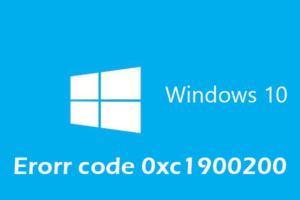-
Table of Contents
- Common Causes and Solutions for Windows Security Center Service Startup Issues on Windows 10
- How to Troubleshoot and Fix the Windows Security Center Service Startup Error on Windows 10
- Understanding the Importance of the Windows Security Center Service and its Role in Windows 10
- Best Practices for Maintaining a Healthy Windows Security Center Service on Windows 10
- Q&A
Fixing Windows 10 security issues with ease.
The Windows Security Center Service is a crucial component of the Windows 10 operating system that monitors and manages the security settings and features on your computer. However, there may be instances where the Windows Security Center Service cannot be started, which can leave your system vulnerable to security threats. In this article, we will explore the possible causes and solutions for this issue on Windows 10.
Common Causes and Solutions for Windows Security Center Service Startup Issues on Windows 10
The Windows Security Center Service is an essential component of the Windows operating system, designed to monitor and manage the security settings on your computer. However, there are instances where users encounter issues with starting the Windows Security Center Service on Windows 10. In this article, we will explore some common causes for this problem and provide potential solutions to help you resolve it.
One possible cause for the Windows Security Center Service not starting on Windows 10 is a conflict with other security software installed on your computer. If you have third-party antivirus or firewall software running, it may interfere with the Windows Security Center Service and prevent it from starting. In such cases, you can try temporarily disabling or uninstalling the conflicting software to see if it resolves the issue. If the Windows Security Center Service starts successfully after disabling or removing the conflicting software, you may need to contact the software vendor for further assistance or consider using an alternative security solution.
Another common cause for the Windows Security Center Service startup issue is a corrupted system file or registry entry. Over time, system files and registry entries can become corrupted or damaged, leading to various issues on your computer, including problems with the Windows Security Center Service. To address this, you can use the System File Checker tool, a built-in Windows utility that scans for and repairs corrupted system files. To run the System File Checker, open the Command Prompt as an administrator and type “sfc /scannow” without the quotes, then press Enter. The tool will scan your system for corrupted files and attempt to repair them. After the process is complete, restart your computer and check if the Windows Security Center Service starts properly.
In some cases, the Windows Security Center Service may fail to start due to a misconfiguration or incorrect settings. To troubleshoot this, you can try resetting the Windows Security Center settings to their default values. To do this, open the Run dialog by pressing the Windows key + R, then type “services.msc” without the quotes and press Enter. In the Services window, locate the “Security Center” service, right-click on it, and select “Properties.” In the Properties window, click on the “Recovery” tab and ensure that the “First failure,” “Second failure,” and “Subsequent failures” options are set to “Restart the Service.” Click Apply and then OK to save the changes. Restart your computer and check if the Windows Security Center Service starts as expected.
If none of the above solutions resolve the issue, it is possible that your computer may be infected with malware or a virus. Malicious software can sometimes disable or interfere with the Windows Security Center Service to avoid detection. In this case, it is crucial to perform a thorough scan of your system using a reliable antivirus program. Make sure your antivirus software is up to date and perform a full system scan to detect and remove any malware or viruses that may be causing the problem. After the scan is complete, restart your computer and check if the Windows Security Center Service starts without any issues.
In conclusion, encountering issues with starting the Windows Security Center Service on Windows 10 can be frustrating, but there are several common causes and potential solutions to consider. By identifying and addressing the underlying cause, you can restore the functionality of the Windows Security Center Service and ensure the security of your computer.
How to Troubleshoot and Fix the Windows Security Center Service Startup Error on Windows 10
The Windows Security Center Service is an essential component of the Windows operating system, designed to monitor and report on the security status of your computer. It provides real-time information about the status of your antivirus, firewall, and other security features. However, there are instances when users encounter an error message stating that the Windows Security Center Service can’t be started on Windows 10. This can be a frustrating issue, as it leaves your computer vulnerable to potential security threats. In this article, we will discuss how to troubleshoot and fix this error.
One possible reason for this error is that the Windows Security Center Service has been disabled. To check if this is the case, you can open the Services window by pressing the Windows key + R, typing “services.msc” (without quotes), and hitting Enter. In the Services window, scroll down until you find the “Security Center” service. Right-click on it and select “Properties.” In the Properties window, make sure that the “Startup type” is set to “Automatic.” If it is set to “Disabled,” change it to “Automatic” and click on the “Start” button to start the service. After doing so, click “Apply” and “OK” to save the changes. Restart your computer and check if the error has been resolved.
If the above method doesn’t work, another possible solution is to reset the Windows Security Center Service. To do this, open the Command Prompt as an administrator by right-clicking on the Start button and selecting “Command Prompt (Admin).” In the Command Prompt window, type the following command and press Enter: “sc config wscsvc start= auto.” This command will reset the Windows Security Center Service to its default settings. Restart your computer and check if the error has been resolved.
If the error still persists, it may be due to a corrupt system file. In this case, you can use the System File Checker (SFC) tool to scan and repair any corrupted files. Open the Command Prompt as an administrator and type the following command: “sfc /scannow.” Press Enter and wait for the scan to complete. If any corrupted files are found, the SFC tool will attempt to repair them. After the scan is complete, restart your computer and check if the error has been resolved.
If none of the above methods work, you can try running the Windows Update Troubleshooter. This tool can help identify and fix any issues with Windows Update, which may be causing the Windows Security Center Service startup error. To access the Windows Update Troubleshooter, go to Settings > Update & Security > Troubleshoot. Select “Windows Update” and click on the “Run the troubleshooter” button. Follow the on-screen instructions to complete the troubleshooting process. Afterward, restart your computer and check if the error has been resolved.
In conclusion, encountering the error message that the Windows Security Center Service can’t be started on Windows 10 can be a frustrating experience. However, by following the troubleshooting steps outlined in this article, you should be able to resolve the issue and restore the functionality of the Windows Security Center Service. Remember to always keep your computer’s security features up to date to ensure the protection of your system and data.
Understanding the Importance of the Windows Security Center Service and its Role in Windows 10
The Windows Security Center Service is a crucial component of the Windows 10 operating system. It plays a vital role in ensuring the security and protection of your computer. However, there are instances when users encounter an issue where the Windows Security Center Service can’t be started. This can be a cause for concern as it may leave your computer vulnerable to various security threats. In this article, we will delve into the importance of the Windows Security Center Service and its role in Windows 10, as well as explore possible solutions to the problem.
First and foremost, it is essential to understand the significance of the Windows Security Center Service. This service acts as a central hub for monitoring and managing the security-related aspects of your computer. It keeps track of your antivirus software, firewall settings, and Windows Update status, among other security features. By constantly monitoring these components, the Windows Security Center Service ensures that your computer remains protected against malware, viruses, and other potential threats.
When the Windows Security Center Service can’t be started, it leaves your computer vulnerable to security risks. Without this service running, you may not receive important notifications about outdated antivirus software or disabled firewalls. This lack of awareness can expose your computer to potential attacks, compromising your personal data and system integrity. Therefore, it is crucial to address this issue promptly to maintain a secure computing environment.
Now, let’s explore some possible solutions to the problem. One common reason for the Windows Security Center Service not starting is due to a conflict with other security software installed on your computer. In such cases, it is recommended to temporarily disable or uninstall any third-party antivirus or firewall software and check if the issue persists. If the service starts successfully after disabling the conflicting software, you may need to consider switching to a different security solution that is compatible with Windows 10.
Another potential solution is to check if the necessary services associated with the Windows Security Center Service are running. To do this, open the Services window by pressing the Windows key + R, typing “services.msc,” and hitting Enter. Look for services such as “Security Center” and “Windows Management Instrumentation” and ensure that their status is set to “Running.” If any of these services are stopped, right-click on them, select “Start,” and observe if the Windows Security Center Service starts functioning properly.
If the above solutions do not resolve the issue, you can try running the System File Checker (SFC) tool. This tool scans your system for any corrupted or missing system files and attempts to repair them. To run the SFC tool, open the Command Prompt as an administrator, type “sfc /scannow,” and press Enter. Allow the tool to complete the scan and follow any instructions provided. Once the process is finished, restart your computer and check if the Windows Security Center Service can now be started.
In conclusion, the Windows Security Center Service is a critical component of Windows 10 that ensures the security and protection of your computer. When this service can’t be started, it leaves your system vulnerable to potential security threats. By understanding the importance of this service and exploring possible solutions, you can address the issue effectively and maintain a secure computing environment. Remember to always keep your security software up to date and regularly scan your system for any potential threats.
Best Practices for Maintaining a Healthy Windows Security Center Service on Windows 10
The Windows Security Center Service is an essential component of the Windows 10 operating system, responsible for monitoring and reporting the security status of your computer. However, there may be instances where you encounter an error message stating that the Windows Security Center Service can’t be started. This can be a frustrating issue, as it can leave your computer vulnerable to security threats. In this article, we will explore some best practices for maintaining a healthy Windows Security Center Service on Windows 10.
One possible reason for the Windows Security Center Service not starting is a conflict with other security software installed on your computer. It is important to ensure that you have only one antivirus program running at a time, as multiple antivirus programs can interfere with each other and cause conflicts. If you have multiple security software installed, it is recommended to uninstall all but one and then restart your computer to see if the issue is resolved.
Another common cause of the Windows Security Center Service not starting is a corrupted system file. Windows has a built-in tool called System File Checker (SFC) that can scan for and repair corrupted system files. To run the SFC tool, open the Command Prompt as an administrator and type “sfc /scannow” without the quotes. This will initiate the scanning process, which may take some time. Once the scan is complete, restart your computer and check if the Windows Security Center Service can now be started.
In some cases, the Windows Security Center Service may be disabled in the Windows Services settings. To check if this is the case, open the Run dialog by pressing the Windows key + R, then type “services.msc” without the quotes and press Enter. This will open the Services window. Scroll down to find the Windows Security Center Service, right-click on it, and select Properties. In the Properties window, ensure that the Startup type is set to Automatic. If it is set to Manual or Disabled, change it to Automatic and click Apply. Restart your computer and check if the issue is resolved.
If none of the above solutions work, it may be necessary to reset the Windows Security Center Service. To do this, open the Command Prompt as an administrator and type the following commands, pressing Enter after each one:
net stop wscsvc
net start wscsvc
These commands will stop and start the Windows Security Center Service, which may help resolve any issues preventing it from starting. After running these commands, restart your computer and check if the Windows Security Center Service can now be started.
In conclusion, encountering an error message stating that the Windows Security Center Service can’t be started on Windows 10 can be a frustrating experience. However, by following these best practices, you can maintain a healthy Windows Security Center Service and ensure the security of your computer. Remember to check for conflicts with other security software, run the System File Checker tool, verify the Windows Services settings, and reset the Windows Security Center Service if necessary. By taking these steps, you can resolve the issue and keep your computer protected from security threats.
Q&A
1. What is the Windows Security Center Service?
The Windows Security Center Service is a built-in feature in Windows 10 that monitors and reports the security status of the computer.
2. What does it mean when the Windows Security Center Service can’t be started?
When the Windows Security Center Service can’t be started, it means that the feature is not functioning properly and cannot monitor or report the security status of the computer.
3. Why might the Windows Security Center Service fail to start?
There can be several reasons for the Windows Security Center Service to fail to start, including issues with system files, conflicts with other security software, or malware infections.
4. How can I fix the issue of the Windows Security Center Service not starting?
To fix the issue, you can try restarting the computer, running a system file checker scan, disabling conflicting security software, or performing a malware scan and removal. If the problem persists, seeking further assistance from Microsoft support or a professional may be necessary.In conclusion, if the Windows Security Center service cannot be started on Windows 10, it may indicate a potential issue with the operating system’s security features. It is recommended to troubleshoot the problem by checking for any conflicting software, running system scans for malware, ensuring all necessary services are running, and updating the operating system to the latest version. If the issue persists, seeking further assistance from Microsoft support or a professional technician may be necessary.







![[Solved]: “Error Code 0xC004F050” in Windows 11 in No Time](https://www.tipsbin.net/wp-content/uploads/2023/08/8e64f519d2390bfc001a41744be2cbd4-300x199.jpeg)

